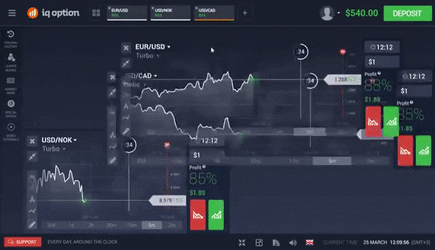What exactly is asset management? The clue lies in the title itself! Business organizations have many types of assets, both tangible and intangible assets. Asset management is about managing these assets.
Proper asset management practices should be in place to avoid any events of these assets being stolen or lost. Not only this, good asset management practices help regulate many maintenance issues and ensure the company assets comply with the government as well as insurance policies. The current situation and the changes to the way business is being done creates a lot of confusion.
With many employees logging in from home, there are confusions regarding the distribution and maintenance of the company’s assets. Managing assets within the company premises is easier compared to managing assets that are spread across different locations, especially when you do not have access to many of them. All these have increased the relevance of asset management roles.
Though the current situation is nor permanent, and things will come back to normal sooner or later, but asset management is going to be an important career choice in the coming days. So, if you are looking for a lucrative career in this area, use this time to get asset management training and secure a good future.
Asset Management Tips
Create a Team with Senior Manager Onboard: First and foremost, create an asset management team with at least one senior member from the management onboard.
 This is because the company might have made many important investments on assets and it is important to have someone to represent the management.
This is because the company might have made many important investments on assets and it is important to have someone to represent the management.
Select Qualified staff: While selecting the members for asset management, make sure that you select qualified and responsible people who are ready to take up responsibility.
As the company grows and evolves, strict measures must be laid down in place to ensure data accuracy.
Define the Role and Need: Many times, companies create an asset management role without giving much thought to it. This could result in creating a role and team without a mission or vision. Before making investments and rushing into implementing asset management measures, take time to define the needs and goal.
Do in Phases: If you try to implement asset management in the whole organization at once, then it could be confusing and tedious. So, introduce the system slowly and gradually, starting from one or two departments and then covering other departments in phases.
Decide the Lifecycle: For implementing effective asset management practices, you need to define the lifecycle of each asset.
 This requires a technology that could effectively capture the requisite data at every stage.
This requires a technology that could effectively capture the requisite data at every stage.
Use the Right Tools: Using appropriate and updated tools and software is important in smooth execution of the asset management methodologies and to accommodate the data flow. Using an appropriate tool would not only defeat the purpose of asset management but also incur unwanted expenditure and may result in revenue loss.
Continuous Monitoring: Once you set up an asset management plan and strategy, ensure that every asset is mapped, and every department follows the system. Failing to ensure this will create loopholes in the system, and could result in defeating the purpose.
Identify Data Inaccuracies: Inaccurate data could result in deviation from the procedures of asset management and could eventually disrupt the system. You may consider using RFID tags or hand-held scanners to identify inaccuracies in the database.
Periodical Review: This is the lifeline of any system that is put in practice. You need to do a periodical review to make sure that the system is well-aligned to achieve the objectives. In case you find any problem, they can be corrected on time for the efficient running of the system.
 Asset Management is a key focus area in business and is independent of industries. To be a successful asset manager, you need to acquire certain skills.
Asset Management is a key focus area in business and is independent of industries. To be a successful asset manager, you need to acquire certain skills.
Enrolling in an Asset Management course would help you know what the role is, what the responsibilities are, and how to execute them.
Imarticus introduces you to the best faculties in asset management.
Additionally, you will be introduced to industry experts and successful alumni who can help you and steer you towards a successful career. Placement services are in place to ensure that you get a right launching pad to start your career.


